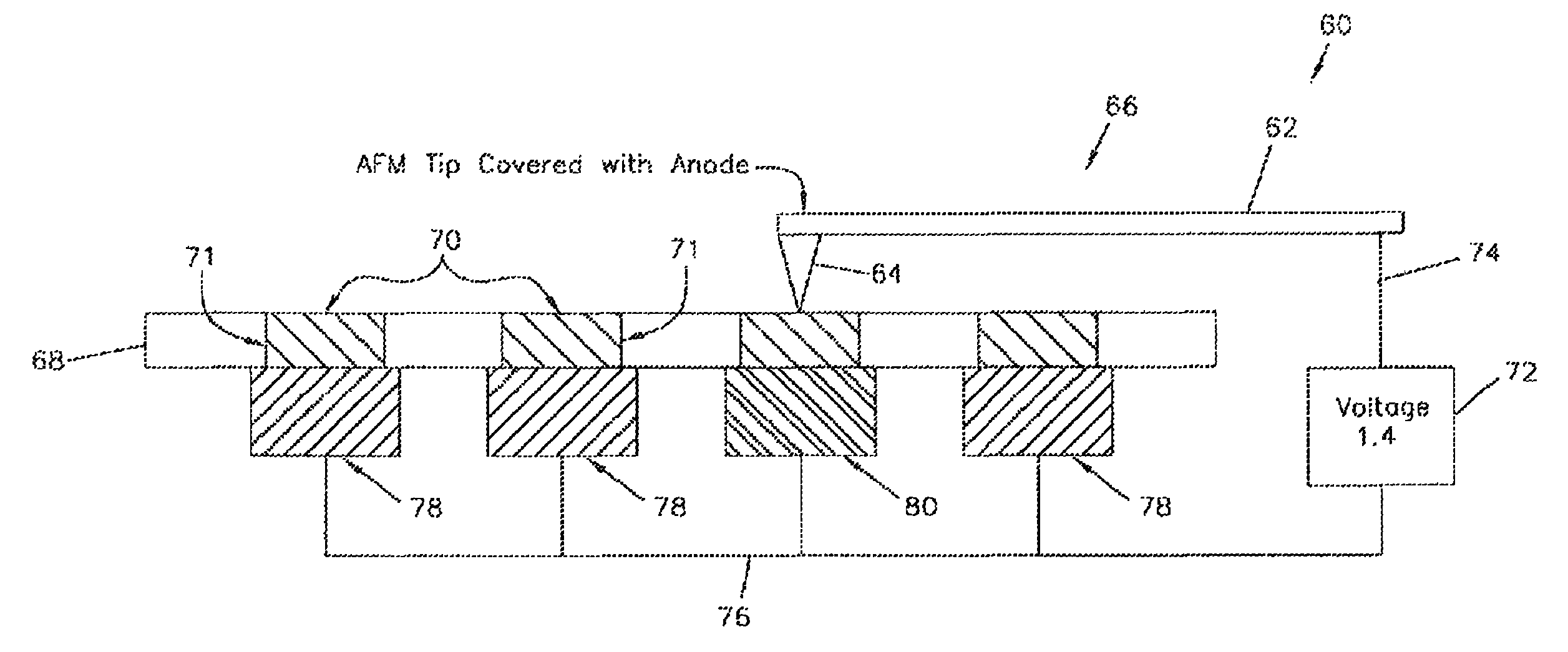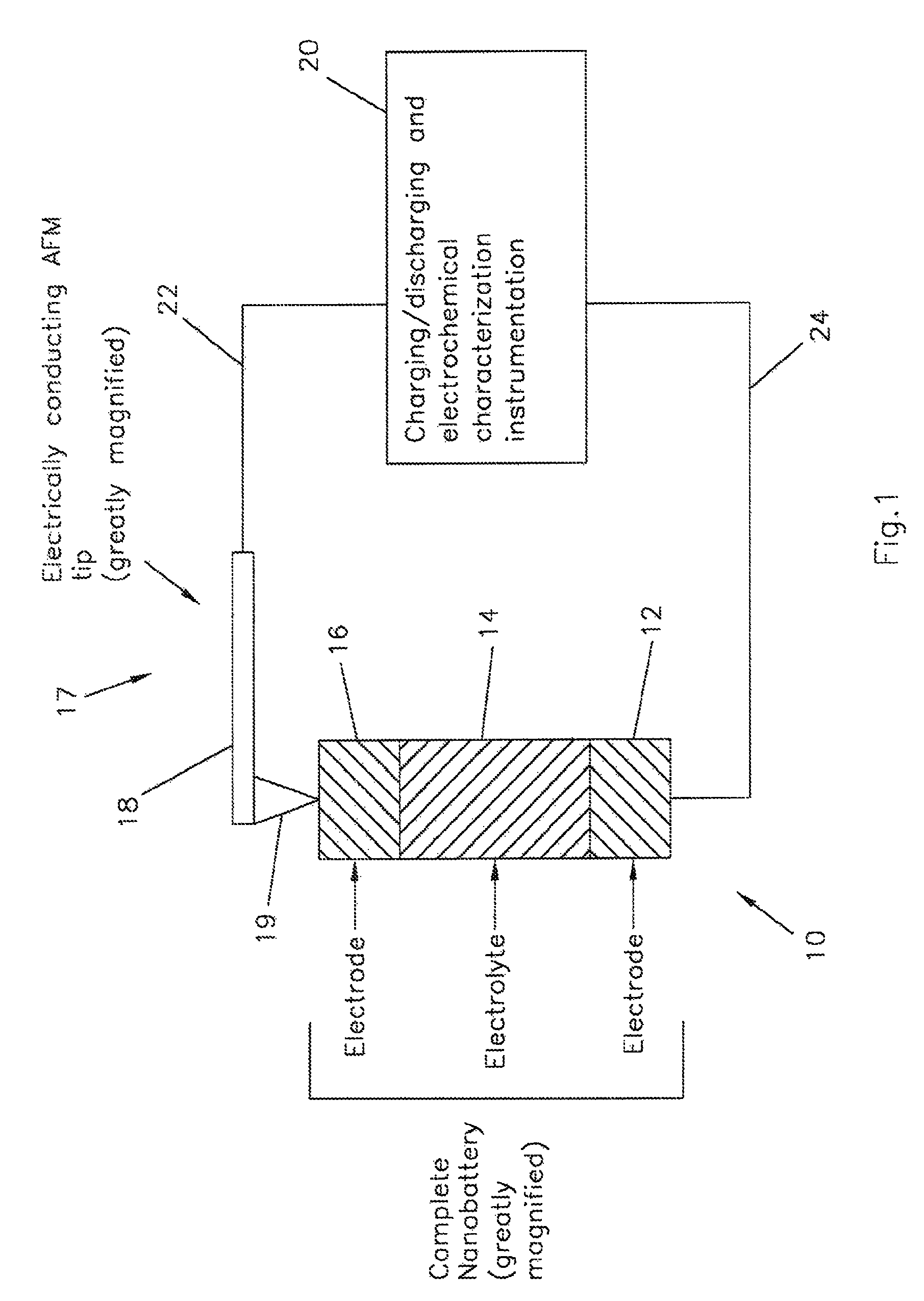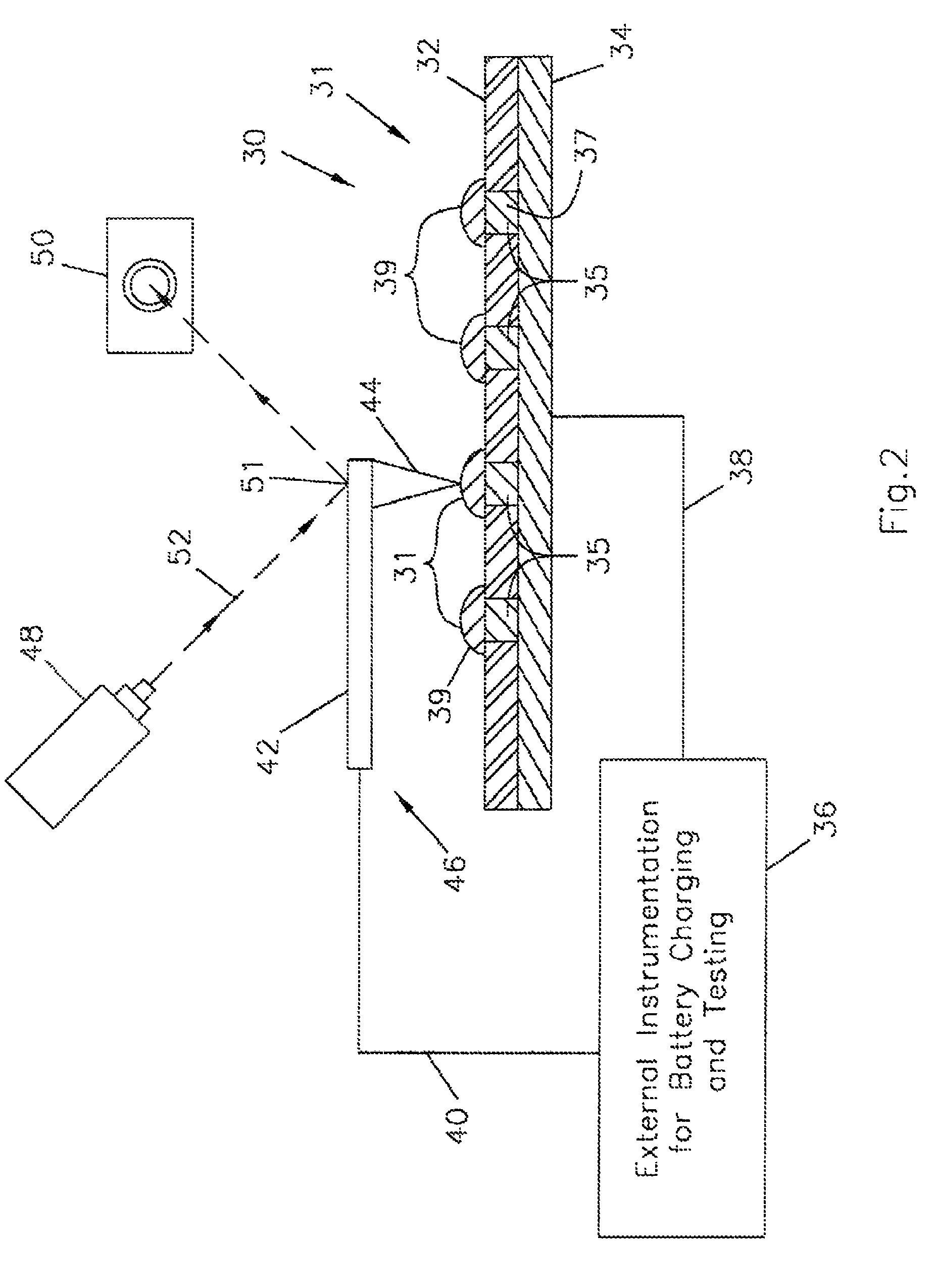Charged arrays of micro and nanoscale electrochemical cells and batteries for computer and nanodevice memory and power supply
a technology of electrochemical cells and nano-scale arrays, which is applied in the field of micro- and nano-scale arrays of electrochemical cells and batteries for computer and nano-device memory and power supply, can solve the problems of increasing the complexity of the surface, unable to effectively erase stored data completely, and unable to effectively remove a single data point, etc., and achieves the effect of reducing the charge over tim
- Summary
- Abstract
- Description
- Claims
- Application Information
AI Technical Summary
Benefits of technology
Problems solved by technology
Method used
Image
Examples
Embodiment Construction
[0034]The embodiments discussed herein are merely illustrative of specific manners in which to make and use the invention and are not to be interpreted as limiting the scope of the instant invention.
[0035]While the invention has been described with a certain degree of particularity, it is to be noted that many modifications may be made in the details of the invention's construction and the arrangement of its components without departing from the spirit and scope of this disclosure. It is understood that the invention is not limited to the embodiments set forth herein for purposes of exemplification.
[0036]The present invention comprises a device capable of storing information for computer applications and in microscale and nanoscale devices. Both digital and analog information may be stored. In addition, systems greater than base 2 may be designed. By using trinary or greater systems, the amount of data stored can be greatly increased. For example, three data points in a binary syste...
PUM
| Property | Measurement | Unit |
|---|---|---|
| output voltage | aaaaa | aaaaa |
| current densities | aaaaa | aaaaa |
| current densities | aaaaa | aaaaa |
Abstract
Description
Claims
Application Information
 Login to View More
Login to View More - R&D
- Intellectual Property
- Life Sciences
- Materials
- Tech Scout
- Unparalleled Data Quality
- Higher Quality Content
- 60% Fewer Hallucinations
Browse by: Latest US Patents, China's latest patents, Technical Efficacy Thesaurus, Application Domain, Technology Topic, Popular Technical Reports.
© 2025 PatSnap. All rights reserved.Legal|Privacy policy|Modern Slavery Act Transparency Statement|Sitemap|About US| Contact US: help@patsnap.com



